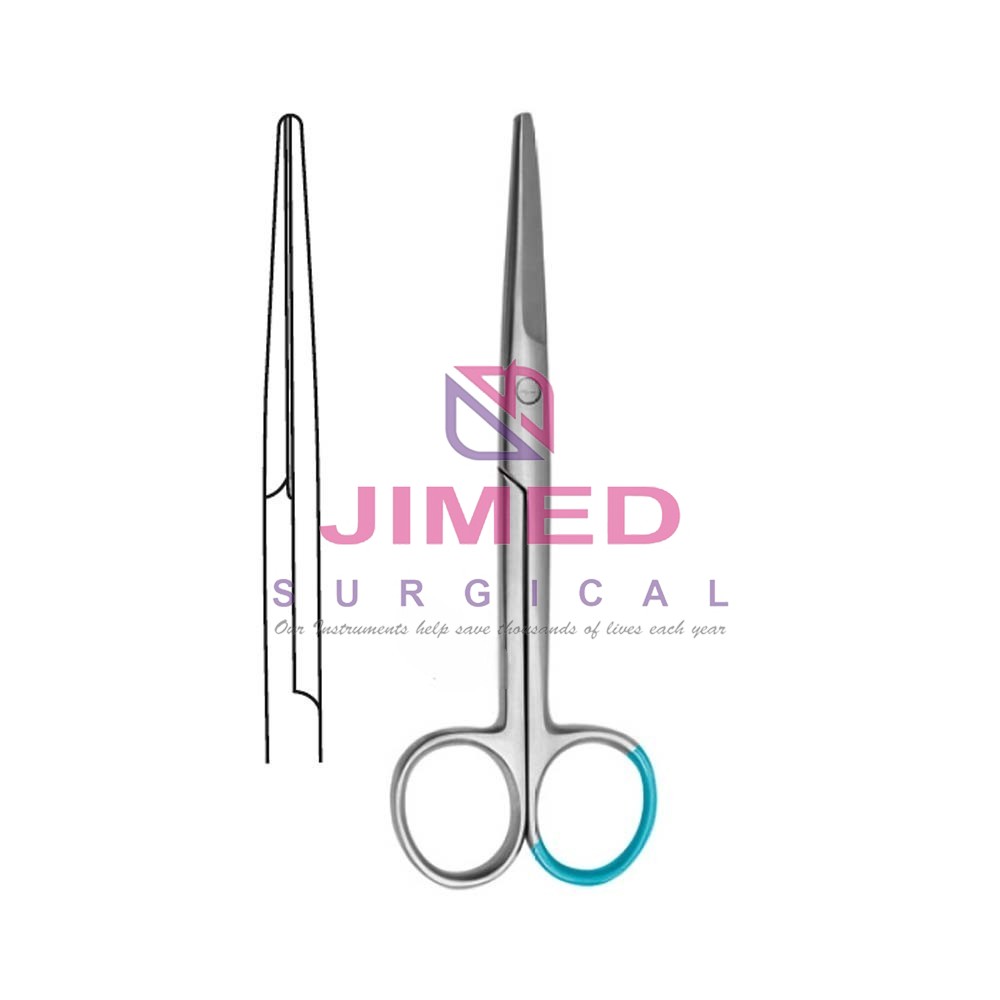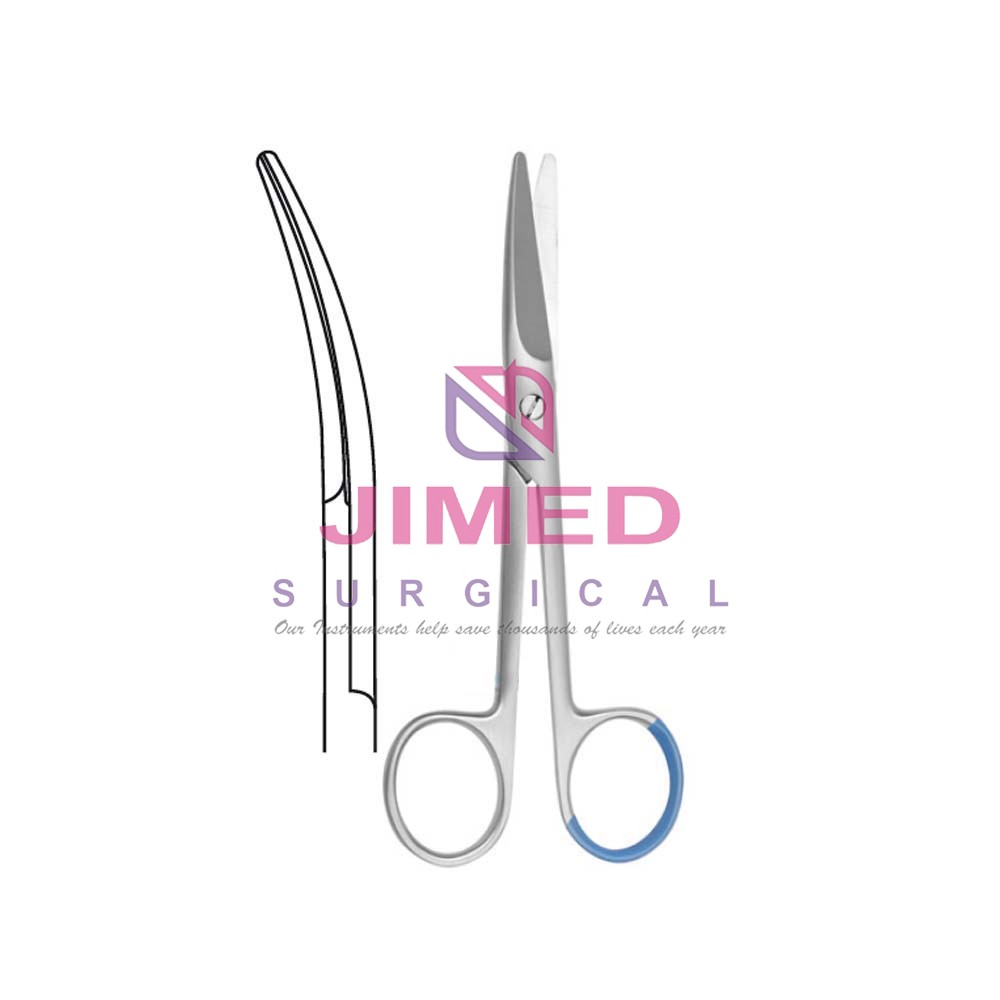Understanding Different Types of Mayo Scissors and Their Uses
Introduction to Mayo Scissors
Mayo scissors are a staple in the surgical world, known for their precision and reliability. These surgical scissors are essential tools used by surgeons to cut through tissues, sutures, and other materials during procedures. Their design and functionality make them indispensable in various medical settings. Understanding the different types of Mayo scissors and their specific applications can enhance surgical outcomes and improve patient care. In this guide, we’ll explore the types, uses, materials, and maintenance of straight and curved Mayo scissors, providing a comprehensive overview for both novice and experienced medical professionals.
Types of Mayo Scissors
Straight Mayo Scissors
Single use surgical Mayo scissors Blunt, straight 14cm are primarily used for cutting sutures and other materials on the surface or in shallow areas. Their straight blades provide control and precision, making them ideal for tasks that require a steady hand. These scissors are robust and designed to withstand the rigors of surgical environments. The straight design allows surgeons to cut with accuracy, ensuring clean and precise incisions. While they are versatile, straight Mayo scissors are particularly suited for cutting in straight lines and accessing easy-to-reach areas.

Curved Mayo Scissors
Single use surgical Mayo scissors Blunt, Curved 14cm are designed for cutting deeper tissues and are often used in more complex surgical procedures. The curved blades allow for greater maneuverability around structures and tissues, making it easier to navigate through the body. This design is especially useful for dissection and cutting in areas where a straight blade might be obstructed. The ergonomic design of curved Mayo scissors enhances the surgeon’s ability to make precise cuts, reducing the risk of damaging surrounding tissues. They are a critical tool for procedures that require detailed and careful dissection.

Common Uses of Mayo Scissors
Single use surgical Mayo scissors Blunt, straight 14cm are used in a variety of surgical procedures due to their versatility and precision. They are commonly employed to cut sutures, dissect tissues, and trim heavy connective tissues. Surgeons rely on these scissors for tasks ranging from minor procedures to complex surgeries. In addition to their primary uses, straight and curved Mayo scissors are also used in other medical fields, such as veterinary surgery and emergency medicine. Their sturdy construction and sharp blades make them suitable for cutting through tough materials, providing reliable performance in high-pressure situations. The ability to choose between straight and curved Mayo scissors allows surgeons to select the appropriate tool for each specific task, enhancing overall surgical efficiency.
Materials and Construction
Straight and curved Mayo scissors are typically made from high-quality stainless steel, which provides durability and resistance to corrosion. The use of stainless steel ensures that the scissors maintain their sharpness and functionality even after repeated use. Some straight and curved Mayo scissors are coated with additional materials to enhance their durability and reduce glare during surgery. The construction of straight and curved Mayo scissors involves precision engineering to ensure that the blades align perfectly for clean cuts. This meticulous manufacturing process guarantees that each pair of scissors meets the high standards required for surgical instruments. The ergonomic design of the handles provides comfort and control, allowing surgeons to use the scissors for extended periods without fatigue.
Proper Care and Maintenance
To ensure the longevity and performance of straight and curved Mayo scissors, proper care and maintenance are essential. After each use, the scissors should be thoroughly cleaned and sterilized to prevent the buildup of biological material and reduce the risk of infection. Regular inspection of the blades and joints is necessary to identify any signs of wear or damage. Sharpening the blades periodically will maintain their cutting efficiency. It is also important to store straight and curved Mayo scissors in a clean, dry environment to protect them from moisture and contaminants. Following these maintenance practices will extend the lifespan of the scissors and ensure their reliability in surgical procedures.
Choosing the Right Mayo Scissors for Your Needs
Selecting the appropriate straight and curved Mayo scissors depends on the specific requirements of the surgical procedure. Consider the type of tissues that need to be cut and the depth of the incision. For cutting sutures and superficial tissues, straight Mayo scissors are ideal. For deeper dissections and more intricate work, curved Mayo scissors are more suitable. It is also important to consider the size of the scissors, as different sizes offer varying degrees of control and precision. Consulting with experienced colleagues and testing different types of Mayo scissors can help in making an informed decision. Ultimately, the right choice of Mayo scissors will enhance surgical efficiency and improve patient outcomes.
Conclusion
Straight and curved Mayo scissors are indispensable tools in the field of surgery, offering precision, durability, and versatility. Understanding the different types of Mayo scissors and their specific uses can greatly benefit surgical practices. Proper care and maintenance ensure that these instruments remain in optimal condition, ready for use in any procedure. By selecting the right straight and curved Mayo scissors for each task, surgeons can perform with greater accuracy and confidence, ultimately improving patient care and surgical outcomes. Whether you are a seasoned surgeon or a medical professional in training, knowledge about straight and curved Mayo scissors is crucial for success in the operating room.

